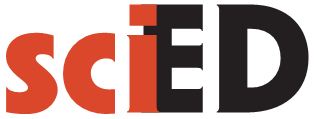Abstract
The aim of our study is to explore the early history of the education of physics experiments in the Meiji era of Japan (1868–1912). In this paper, we examine three Japanese physics experiment textbooks which were published during 1880s. One characteristic feature is that the most of the experiments could be performed using simple handmade apparatuses. We consider what can be learned from the ingenuity of physics education pioneers of the late 19th century.References
Book review. (1880). The Popular Science Monthly, 18(11), 135–136. Available at http://archive.org/details/popularsciencemo18newy
Cooley, L.C. (1870). Easy experiments in physical science, for oral instruction in common schools. C. Scribner and Company. Available at http://archive.org/details/easyexperiments00cool
Cooley, L.C. (1879). The molecular theory. The Popular Science Monthly, 15(8), 462–470. Available at http://archive.org/details/popularsciencemo15newy
Cooley, L.C. (1880). The new text-book of physics. New York: Charles Scribner’s Sons. Available at http://archive.org/details/newtextbookofphy00coolrich
Fukuzawa, Y. (1868). Kunmo Kyuri Zukai (Illustrated introductory physics). Keio-Gijuku. Available at http://kindai.ndl.go.jp/info:ndljp/pid/830074
Goto, M. & Miyake, Y. (1886). Kan’i Kikai Rikagaku Shiken-Ho Kan-Ichi (Simple physics and chemistry experiments using homemade apparatuses, No. 1). Fukyu-Sha.
Itakura, K. (1972). Postscript in the reproduction of Rika-Shoshi. Kasetsu-Sha.
Itakura, K. (2009). Zoho Nihon Rika Kyoiku-Shi (Japanese history of science education, revised and enlarged edition). Kasetsu-Sha.
Nagata, A. (1994). Nihon Rika Kyouzai-Shi (The history of Japanese general science teaching materials). Tokyo Horei Publishing.
Nagata, A. (2003). Shi-Rika-Kyoiku-Nyumon (New introduction on general science education). Hoshi-No-Wano-Kai.
New York State University, Albany. (1894). An historical sketch of the State Normal College at Albany, N.Y. and a history of its graduates for fifty years, 1844–1894. Albany: Brandow Print Company. Available at http://archive.org/details/historicalsketch01newy
Sugiyama, K. (1911). Okayama-Ken-Meikan (The Directory of Okayama Prefecture).
The Physical Society of Japan. (1978). Nihon No Butsurigaku-Shi (Japanese history of physics). Tokai University Press.
Quackenbos, G.P. (1869). A natural philosophy. New York: D. Appleton and Company. Available at http://archive.org/details/anaturalphiloso06quacgoog
Rika-Shoshi (Simple and easy experiments of physics and chemistry). (1882). Monbusho. Available at http://kindai.ndl.go.jp/info:ndljp/pid/826131
Takahashi, H., Akabane, A., Shozawa, J. & Tamaki, T. (2014). Rika-Shoshi, the first physics experiment textbook published in Japanese and its editor, Jun’ichi Udagawa. JPS Conf. Proc. 1, 017023 . Available at http://journals.jps.jp/doi/abs/10.7566/JPSCP.1.017023
Udagawa, J. (1885). Kan’i-Shiken-Ho (Simple experiments). Bungaku-Sha. Available at http://kindai.ndl.go.jp/info:ndljp/pid/830422
Authors who publish with this journal agree to the following terms:
- Authors retain copyright and grant the journal right of first publication with the work simultaneously licensed under a Creative Commons Attribution License that allows others to share the work with an acknowledgement of the work's authorship and initial publication in this journal.
- Authors are able to enter into separate, additional contractual arrangements for the non-exclusive distribution of the journal's published version of the work (e.g., post it to an institutional repository or publish it in a book), with an acknowledgement of its initial publication in this journal.
- Authors are permitted and encouraged to post their work online (e.g., in institutional repositories or on their website) prior to and during the submission process, as it can lead to productive exchanges, as well as earlier and greater citation of the published work (See The Effect of Open Access).
